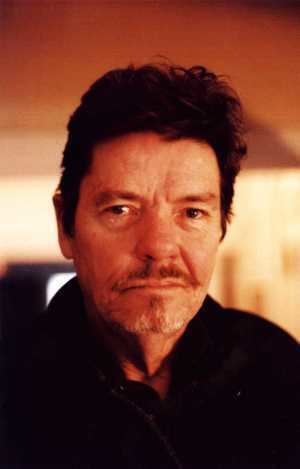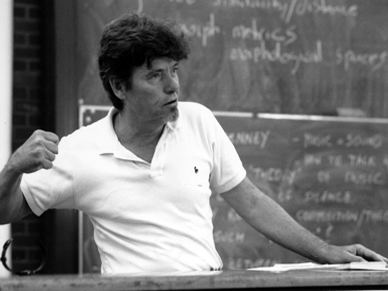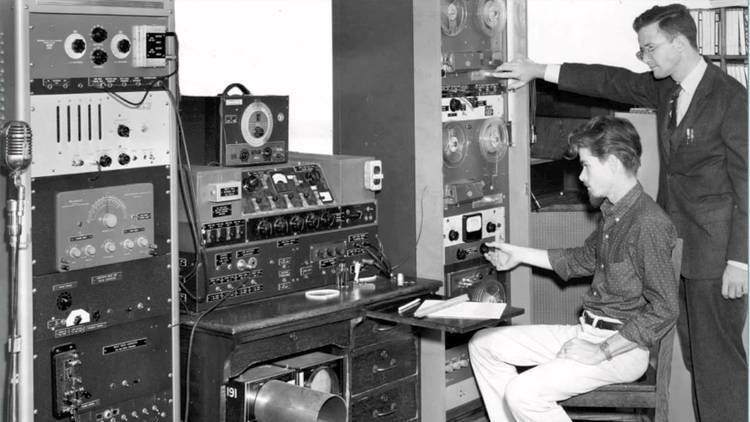Name James Tenney Role Composer | Spouse Lauren Pratt (m. ?–2006) Movies Cat's Cradle | |
 | ||
Died August 24, 2006, Valencia, California, United States Albums Postal Pieces, Selected Works 1961-1969, Forms 1-4 Similar People Carolee Schneemann, Rrose, Stan Brakhage, Phil Solomon | ||
James tenney as a compositional instructor
James Tenney (August 10, 1934 – August 24, 2006) was an American composer and influential music theorist.
Contents
- James tenney as a compositional instructor
- James tenney spectral canon for conlon nancarrow
- Biography
- Influence
- Interviews
- References

James tenney spectral canon for conlon nancarrow
Biography

Tenney was born in Silver City, New Mexico, and grew up in Arizona and Colorado. He attended the University of Denver, the Juilliard School of Music, Bennington College (B.A., 1958) and the University of Illinois (M.A., 1961). He studied piano with Eduard Steuermann and composition with Chou Wen-chung, Lionel Nowak, Paul Boepple, Henry Brant, Carl Ruggles, Kenneth Gaburo, Lejaren Hiller, John Cage, Harry Partch, and Edgard Varèse. He also studied information theory under Lejaren Hiller, and composed stochastic early computer music before turning almost completely to writing for instruments with the occasional tape delay, often using just intonation and alternative tunings. Tenney's notable students include John Luther Adams, John Bischoff, Peter Garland, Larry Polansky, Charlemagne Palestine, and Marc Sabat. See: List of music students by teacher: T to Z#James Tenney. He performed with John Cage, as well as with the ensembles of Harry Partch (in a production of Partch's The Bewitched in 1959), Steve Reich, and Philip Glass (the latter two in the late 1960s).

He lived in New York during much of the 60s, where a large part of his contribution to the music scene was funnelled through "Tone Roads", a group founded with Malcolm Goldstein and Philip Corner, and for which his partner Carolee Schneemann designed beautiful flyers and programs. He was exceptionally dedicated to his great New England forebear Charles Ives, many of whose compositions he conducted (including the first performance of "in re, con moto"); his interpretation of the "Concord" Sonata for piano was much praised.
Tenney's work deals with perception (For Ann (rising), see Shepard tone), just intonation (Clang, see gestalt), stochastic elements (Music for Player Piano), information theory (Ergodos, see ergodic theory), and with what he called 'swell' (Koan: Having Never Written A Note For Percussion for John Bergamo), which is basically arch form.
His earliest works show the influence of Webern, Ruggles and Varèse, whereas his music from 1961-64 was largely computer music, one of the earliest significant body of such work in existence. In 1961, Tenney composed Analogue #1: Noise Study (for tape) using computer synthesized noise and Collage No.1 (Blue Suede) (for tape) by sampling and manipulating a famous Elvis Presley recording.
In 1967 he gave an influential FORTRAN workshop for a group of composers and Fluxus artists that included Steve Reich, Nam June Paik, Dick Higgins, Jackson Mac Low, Phil Corner, Alison Knowles and Max Neuhaus.
A gradual assimilation of the ideas of John Cage considerably influenced the development of his music in the later 1960s. To this was added an interest in tuning and in the harmonic series, as first evident in the orchestral work Clang of 1972, an interest that continued to develop for the rest of his life.
The majority of Tenney's mature works (post-1964) are instrumental pieces, often for unconventional instrumental combinations (e.g. Glissade for viola, cello, double bass and tape delay system (1982), Bridge for two pianos eight hands in a microtonal tuning system (1982–84), Changes for six harps tuned a sixth of a semitone apart, 1985) or for variable instrumentation (Critical Band, 1988, In a Large Open Space, 1994). His pieces are most often tributes to other composers or colleagues and subtitled as such. As his friend Philip Corner says, For Ann (rising), "must be optimistic! (Imagine the depressing effectiveness of it — he could never be so cruel — downward)..."
Tenney wrote the seminal Meta (+) Hodos (one of, if not the, earliest applications of gestalt theory and cognitive science to music), the later Hierarchical temporal gestalt perception in music : a metric space model with Larry Polansky, John Cage and the Theory of Harmony (1983, the fullest exposition of his theories of harmonic space), and other works. Nearly a quarter of a 657-page volume of the academic journal Perspectives of New Music was devoted to Tenney's music (Polansky and Rosenboom 1987), and in 2008 the UK journal Contemporary Music Review devoted a whole issue to his work (vol. 27 part 1).
Tenney was one of the four performers of the Steve Reich piece Pendulum Music on May 27, 1969 at the Whitney Museum of American Art. The other three were: Michael Snow, Richard Serra and Bruce Nauman. Tenney also performed on Terry Riley's album In C.
Tenney also wrote the in-depth liner notes to Wergo's edition of Conlon Nancarrow's Studies for Player Piano. (Nancarrow, as a favor, punched the roll for Tenney's Spectral Canon for Conlon Nancarrow). Tenney also starred nude in a 1965 silent film of collaged and painted sequences of lovemaking between him and his then partner, the kinetic-theater artist Carolee Schneemann, called Fuses; he did much other music for her, and participated in her events. (Haug 2007, 20 & 25–26).
He taught at the Polytechnic Institute of Brooklyn, the California Institute of the Arts, the University of California, and York University in Toronto.
He died on 24 August 2006 of lung cancer in Valencia, California.
Influence
In 2015, techno artist Rrose released Rrose Plays James Tenney - Having Never Written a Note for Percussion on Further Records (FUR099). The release consists of both a studio and live version of Rrose performing Tenney's piece, and includes a facsimile insert of Tenney's original hand-written post card score. The studio version was performed and recorded at Brookland Artspace Studios, Washington D.C., on September 20, 2012. The live version was performed and recorded in the Dupont Underground Train Tunnels Beneath Washington D.C. on September 22, 2012.
